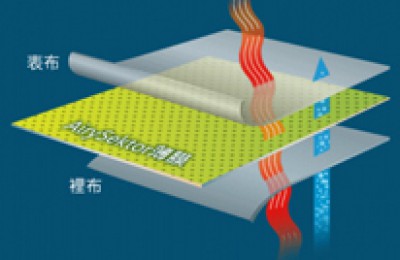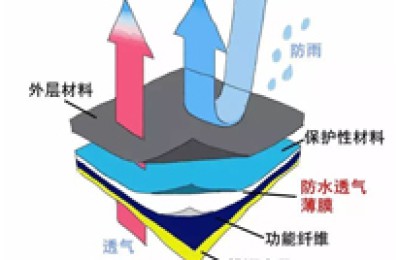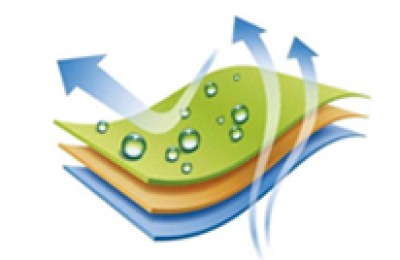Process on air-jet loom
1: Warp position line and warp tension
(1) Determination of the cloth fell position
The cloth fell position of the air-jet loom is restricted by the height of the breast beam, and the amount of movement of the front and rear positions of the breast beam Very small. The upper and lower positions are determined by the thickness of the horn.
The upper and lower positions of the weaving mouth depend on the special-shaped reed. When beating up, the cloth fell is too high and the center line of the reed groove is upward. If the fabric fell is too high, the upper lip of the reed groove will touch the cloth surface, causing the fabric fell to jump, resulting in edge bracing defects and yarn breakage. If the fabric fell is low, the lower lip of the reed groove will break the weft yarn at the fabric fell. In severe cases, the fabric fell will be damaged and broken.
The position of the weaving mouth of the loom varies depending on the type of fabric
Tissue Tsudakoma machine model Toyota and Chubo machine model
Plain weave mat 4mm Mat 4mm
Twill pad 3mm, pad 2mm
Satin pad 5mm, pad 4mm
(2) Warp tension setting
The warp tension is set to clear the opening and reduce the The purpose is to break the warp yarn and improve the physical quality.
Total warp number
Total warp tension (N) = ———— * (0.8~1.2) * 9.8
Imperial count
When determining the total warp tension, it should also be considered that as the roll diameter decreases, the actual warp tension will be insufficient. In order to keep the warp tension constant, the winding diameter needs to be compensated. (This refers to the Tsudakoma model)
Insufficient tension when the roll diameter is small
Compensation amount (roll diameter compensation) = ———————————
Setting value when the roll diameter is 90cm
Setting range: 0<compensation amount<100
(3): Setting of the rear beam height
The height of the back beam is equal to that of the breast beam, and the tension of the upper and lower warp yarns is the same. Form a shed. The air-jet loom has high speed, large tension, and wide cloth, so reeds and streaks will appear on the cloth surface of the equal-tension shed. Affect the quality of cloth surface.
The back beam is higher than the breast beam, the upper warp tension is small, and the lower warp tension is high. It forms a cloth equal tension shed, suitable for plain weave fabrics, and the cloth surface is relatively plump.
The back beam is lower than the breast beam, the upper warp tension is large, and the lower warp tension is small. It also forms a cloth equal tension shed, which is suitable for twill fabrics with clear lines.
In addition to moving up and down, the back beam of the new air-jet loom can also move forward and backward to adjust the length of the warp at the rear of the shed and the angle of envelopment of the warp on the back beam. Usually when weaving medium and special yarn fabrics, the back beam is in the middle; when weaving fine, extra high-density fabrics, the back beam moves forward, which is beneficial to opening the shed; when weaving thick special fabrics, it moves backward to increase the enveloping angle of the warp yarns on the back beam, so that The tension remains even and the fabric is smooth and stiff, but the rear beam moves backward too much, making it inconvenient for the operator to operate.
(4): Setting the position of the stop frame
The stop device is not only an automatic stop device for warp breakage, but also a component that determines the position of the rear part of the shed. The warp stop device moves backward, and the length of the rear part of the shed increases. When the opening height remains unchanged, the warp elongation becomes smaller, but the number of frictions between the warp yarns increases. Therefore, it is advantageous for warp yarns with weak strength and low elongation but good sizing quality. On the contrary, for warp yarns with higher strength and good consistency, the warp stopping device moves forward, and the closer the length of the rear part of the shed is to the length of the front part of the shed, the less likely the warp yarns are to be rubbed by the heald eye when lifting, which will help reduce end breakage. Improve loom efficiency.
The height of the warp stopping device should be adjusted accordingly with the height of the following beam. It is required that there is a gap of 1~2mm between the warp stop frame and the warp yarn. The installation position of the warp drop frame is high, the warp yarns are close to the frame bars, and the floral fabric is not easy to fall, which will cause the warp to be broken without turning off the machine. After the warp drop frame is scratched by the warp yarns, the warp yarns will also be damaged.
2: The relationship between the warp position line and the warp and weft direction
The closer the weaving beam disc width is to the reed width, the fewer the warp stops will be. Excessive disc width will also increase the weft stop, because the edge warp yarns are easy to relax and block the weft yarn flight.
The height of the heald frame is set too high, and the auxiliary nozzle jet will impact the lower warp yarn, which will hinder the flight of the weft yarn, and the weft yarn head end will not be in place on time and will stop.
The warp drop frame and back beam are set too high, causing the upper and lower warp yarns to participate in too much tension, causing the upper warp yarns to sag and also cause the weft to stop.
If the back beam is too high, warp yarn breakage will increase, but if the back beam is too low, the warp yarns will easily become entangled with each other after breakage, so the appropriate back beam height must be selected.
3: The relationship between warp position lines and the physical and mechanical properties of fabrics
The warp position lines have some influence on the fabric’s width, warp and weft pressure, warp and weft density, etc. Air-jet looms weave general plain fabrics. When the height of the back beam is at the standard, the tension of the upper and lower warp yarns is equal, and the fabric is strong in the warp and weft directions. If the back beam is raised or lowered, the strength in the warp and weft directions will be reduced.
When the back beam is raised or lowered within 5mm, it will have little effect on the warp density. When the back beam is raised more than 5mm, the tension of the lower warp yarn becomes larger, the clamping of the weft yarn by the warp yarn increases, the density of the weft yarn increases, and the cloth width becomes narrower. When weaving wide fabrics on a loom with a width of 280cm, the density distribution of warp yarns on the cloth surface is uneven. It is larger on both sides and smaller in the middle. Therefore, the average value should be taken when measuring the warp density. The more points selected, the more accurate it will be.
When weaving twill, the back beam should be lower than the breast beam. When the height is equal, the tension of the upper warp yarn is small, and it is easy to cause skipping or weft stop.
Four: The relationship between the warp position line and the appearance of the fabric
When weaving general plain fabrics with an air-jet loom, square holes and streaks are prone to occur. Select the appropriate back beam, drop frame height, and appropriate warp tension difference between the upper and lower layers. It is a necessary condition to improve the appearance quality of cloth surface.
The height and position of the back beam and the stopping frame determine the beat-up time.boundary point. Therefore, the difference angle between the front and back openings should be between 270 and 340 degrees. The difference angle of the loom is 20 degrees when weaving medium-density fabrics, and 30 degrees is preferred when weaving high-density fabrics.
2: The relationship between shedding time and cloth fell movement
The sooner or later the shedding time determines the size of the shed opening during beat-up, and the size of the shed opening determines the moment of beat-up The amount of movement of the cloth fell caused by the warp tension at the cloth fell. The large amount of movement of the fabric mouth directly affects the bricklaying quality of the fabric.
The opening time is early, and the movement of the cloth mouth is small; on the contrary, the movement is large. Excessive movement of the cloth fell is an important reason for side brace defects or yarn breakage.
3: The relationship between the shedding time and the physical and mechanical properties of the fabric
According to measurements, when weaving plain fabrics with an air-jet loom, setting the shedding time at 290 degrees will result in a lower warp strength of the fabric; When the opening time is set at 320 degrees, the warp strength of the fabric is high. When weaving twill fabric, it is difficult to weave after the opening time is set to 340 degrees. At 320 degrees, the strength of twill fabric is high. With a 320 degree front opening, the strength of the twill fabric decreases.
AAFNJKIYO9P
Disclaimer:
Disclaimer: Some of the texts, pictures, audios, and videos of some articles published on this site are from the Internet and do not represent the views of this site. The copyrights belong to the original authors. If you find that the information reproduced on this website infringes upon your rights, please contact us and we will change or delete it as soon as possible.
AA







